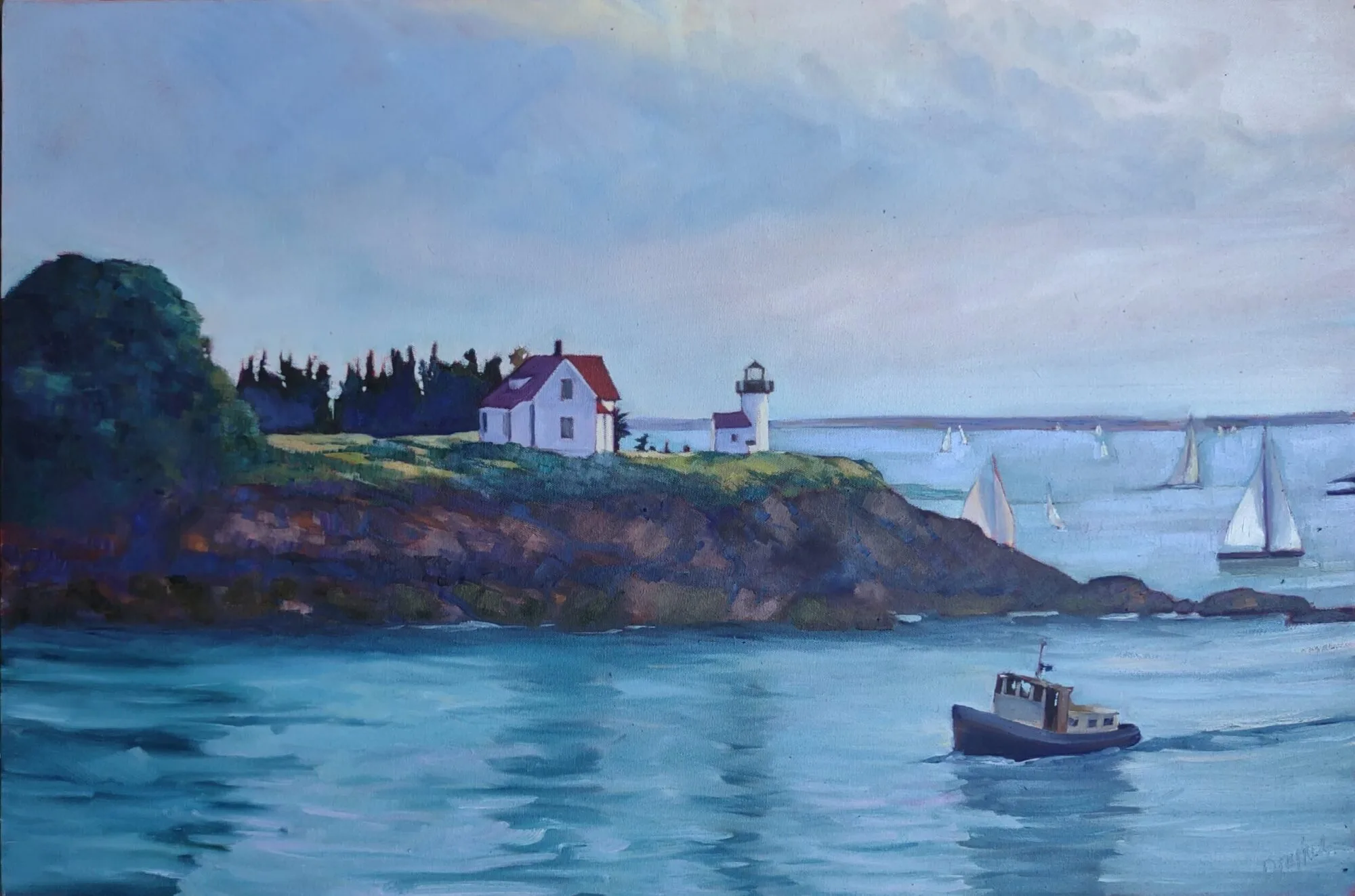Writers are told to write about what they know. What should artists depict?
| The Red Truck, by Carol L. Douglas |
Yesterday I stopped to sit for a few minutes on a stone wall in Rockport. In my solitude, I noticed the beautiful asymmetry of the house across the street. Its white clapboard and modest door were framed by dark spruces and a dandelion-studded lawn.
Most people zip down this street with no more than a passing glance at the historic homes and the harbor below. Yet there are many quietly memorable moments: a brook burbling over granite, ancient gnarled beeches, sunlight glancing off cedar shakes. The only way to see them is to get out of the car and walk.
“Yes, well, views are very nice, Hastings. But they should be painted for us so that we can study them in the warmth and comfort of our own homes. That is why we pay the artist for exposing himself to these conditions on our behalf.” (Poirot: The Adventure Of The Clapham Cook)
| Drying Sails, by Carol L. Douglas. |
“How and why do you choose the views you paint?” a reader asked. The answer depends, in part, on why I’m painting. If I’m in a plein air event or on the road, the views I choose will tend to be more iconic. Here in mid-coast Maine, I have the luxury of intimacy.
Anything can be the subject of a painting. That doesn’t mean content is unimportant. I paint what matters to me: boats, rocks, water, skies, earth and trees. This was never a conscious choice, but the impulse is so strong that it drove me from Western New York to Maine.
| Keuka Lake, by Carol L. Douglas |
I don’t think you can force this choice. Most artists experiment with subject matter before finding their métier. Piet Mondrian’s windmills and Vincent Van Gogh’s dark peasant studies are two examples.
Composition must drive any painting. In Rochester last week, a student showed me her first design, of a row of peonies marching at a diagonal across her page. I suggested she move 90° to catch the slight S-curve in the row. The difference was staggering.
| Castine Lunch Break, by Carol L. Douglas |
Closely tied to this is the question of light. Sunlight is the major organizing principle in landscape painting, but we can’t always order it up. In today’s drear, I’m going to suggest to my plein air class that we concentrate on close-ups rather than vistas. The architecture of objects can partly cover for the absence of light.
“There are no lines in nature, only areas of colour, one against another,” Edouard Manet said. The northeast is overwhelmingly cool in color: blue or grey skies against similar seas and green foliage. I look for color patterns within that, particularly those with a flash of warmth: the orange line in the seaweed, the pink of granite, a yellow glint in the sky. After light, color patterns are paramount.
 |
| Dinghy, Camden Harbor, by Carol L. Douglas |
I also think about meaning. This is old-fashioned, but I don’t see the point of painting if my work says nothing. I hope that my paintings speak about the relationship of man to his environment, about the enduring qualities of the earth, and about simple joy.
 |
| Rocks at the American Yacht Club,by Carol L. Douglas. |
Addendum: if you’re a landscape photographer, you might be interested in this contest sponsored by Machias Savings Bank.
